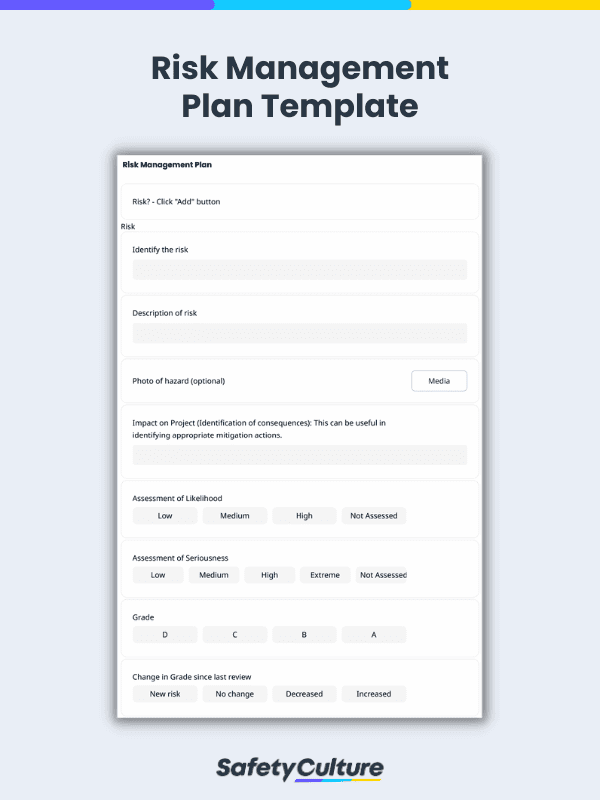What is Risk Management?
Risk management is a project management tool that helps ensure workplace safety. Beyond accident prevention, risk management can make your team more efficient and better prepared to take on potential risks or hazards and improve the overall safety of your site.
4 Steps of the Risk Management Process
- Risk Recognition: Identify all potential risks affecting the project.
- Risk Assessment: Prioritize identified risks based on severity/damage impact.
- Risk Mitigation: Reduce the risk occurrence by implementing safety measures or removing/modifying certain aspects.
- Risk Monitoring: Evaluate the effectiveness of safety measures.
How To Write A Risk Management Plan
The following should be included in a risk management plan:
- All the identified risks that can potentially impact a project.
- A scale that estimates the probability of a risk occurring and the severity of impact.
- The consequences on the project should any of the risks take place.
- Mitigation actions to either prevent the occurrence of identified risks or serve as damage control should they happen.
Risk Management Plan For Construction
Construction companies are faced with huge risks. Aside from ensuring worker safety and promoting a culture of safety, construction companies have to plan for project delays, issues with clients, and miscommunication among team members.
While a lot of things can go wrong during construction, it is the project manager’s responsibility to resolve issues before they harm the project. To ease the construction process, the project manager needs a risk management plan.
Here’s an example of a risk management plan for construction:
- Assess management of resources.
- Identify project requirements.
- Discuss project phases with team.
- Assign tasks and set deadlines.
- Prepare for possible setbacks.
- Establish risk protocols.
- Inspect site for safety hazards.
What is A Risk Management Plan Template?
A risk management plan template is used in establishing a framework that will assess and manage risks associated with a project. Project managers can create multiple risk management plans from one template. Here is a sample template report of a Risk Management Plan PDF created in the context of warehouse safety.
What’s in the Risk Management Plan Template?
Generally, a risk management plan should include the following items:
- Project reference
- Process
- Risk identification
- Risk assessment
- Risk analysis
- Risk response/mitigation actions
- Personnel responsible for mitigation actions
- Associated costs
- Risk monitoring
Why Should A Project Manager Use A Risk Management Plan Template?
A project manager should use a risk management plan template because it can be confusing to keep track of several risk management plans for different projects. Even if a project manager has only one ongoing project, writing a risk management plan from scratch can seem daunting.
By using a risk management plan template, project managers can implement safety guidelines across a wide range of projects. Starting with a risk management plan template gives the project manager an idea of what to look out for.



